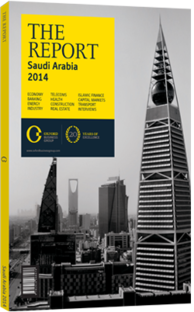Room to rent: The office market is set to see a large increase in inventory
With the Saudi economy growing strongly, residential property is not the only real estate asset expected to show potential in the coming years. The commercial office segment should also be driven by the same fundamental demand dynamics that are propelling other aspects of the industry forward.
Expansionary fiscal policy underpinned by large oil receipts continues to drive economic growth in the Kingdom. The government’s commitment to infrastructure development as a platform for diversification and private sector expansion could stimulate additional office demand over the next decade. According to the National Bank of Kuwait, the Saudi non-oil economy grew at a rate of 8% per annum between 2005 and 2012. The HSBC Purchasing Managers’ Index for Saudi Arabia shows that the non-oil private sector economy continues to grow. In February 2014 output and new orders were increasing, while staffing levels rose for the 29th month in a row. This bodes well for demand in the office real estate segment.
OVERSUPPLY: On the ground, however, the situation in this market is very different from its residential counterpart. While that segment has extremely high demand, it also has little supply, leading to strong appreciation in prices. This is not the case with commercial office property. Asif Iqbal, head of research and advisory at realtor Century 21, told OBG, “The office market will be oversupplied for the next five years and that will not change.” Demand exists, but there has been, and will continue to be, a large inventory of supply coming on to the market, especially in Riyadh.
King Abdullah Financial District (KAFD), with 800,000 sq metres of leasable space, constitutes a massive expansion of the existing supply by itself. Its completion, scheduled for the second half of 2015, will therefore have a profound impact on the market. There are more than 3m sq metres of office space across the whole country, and KAFD will increase Riyadh’s office stock by 40%. Its impact on pricing in the capital is likely to be substantial. In mid-2013 there was 425,000 sq metres of vacant A- and B-class office space in Riyadh, according to Century 21, but there is currently 1.3m sq metres of supply in the pipeline up to mid-2015.
FALLING RATES: Given that vacancy rates in the capital’s office buildings averaged 18% in mid-2013, up from 15% in mid-2012, it is unsurprising that the medium-term outlook is gloomy.
These skewed supply and demand dynamics have been affecting rental rates in the market. In Riyadh, rental rates for grade-A and -B buildings fell by just under 1% to SR1059 ($282) per sq metre in the third quarter of 2013, according to Jones Lang LaSalle (JLL). Prime rents fell by 2.6% to SR1850 ($493) per sq metre. Average grade-A rentals stood at SR1258 ($335) per sq metre, while grade-B rates averaged SR888 ($237) per sq metre. In Jeddah, the office vacancy rate stood at 16% with average rents stable at SR1500 ($400) per sq metre for the same period, according to JLL.
The general outlook for the segment is, therefore, less buoyant than for the residential sector. However, some projects continue to perform well, sustained to a large extent by government and financial sector tenants. The capacity of the government to lease whole buildings has helped to support the sector, while the financial industry also takes sizeable floor space ( generally 300-1500 sq metres per tenant). For example, 10% of KAFD is already leased to the Capital Markets Authority and Samba Financial Group.
In the private sector, further demand will also come from the construction industry, which is growing as a result of numerous government-funded infrastructure projects (see Transport and Construction & Engineering chapters). According to Saadat Ali, senior market analyst at Century 21, “The metro project has had a very positive impact on the leasing market.” The other area that is likely to perform well in spite of the general oversupply is the business park concept. “People are moving to them from the central business district. They provide a very work-friendly environment with green spaces and impressive services there,” said Iqbal.
You have reached the limit of premium articles you can view for free.
Choose from the options below to purchase print or digital editions of our Reports. You can also purchase a website subscription giving you unlimited access to all of our Reports online for 12 months.
If you have already purchased this Report or have a website subscription, please login to continue.

